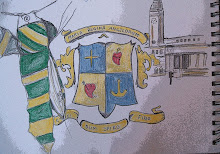To look at now, without knowing what the pictograms represent, some of them I can sort of work out, but others I do not understand at all. In terms of the design, I think they have been designed very well. They are consistent with the use of the black and white colours, whether it is black on white or the other way round. I think the competent designs help you to understand the meaning for each one. You can see all the images are centralized within the black box and also appear to have equal spacing between two separatre images. There is also consistency within the same image representing something different. For example the hands are all based on the same design of the hand, despite them representing different actions.


This also reminded me of the pictograms that light up on your dashboard of your car when you are driving, such as when the petrol light comes on or when you have your handbrake on. Some you can identify them easily because you see them a lot more often than others that only occur when there is a problem. For example if there was a problem with the engine, I think if I did not check the manual then I would be confused as to what was wrong with the car by looking at the symbol. Here are some examples below from http://naomhquinn.com. Most are simple and easy to understand but there are a few I wouldn't be so sure about if they appeared on the dashboard without looking in the manual.



My engine warning light is on in my 2005 chevy avalanche 2500
ReplyDelete